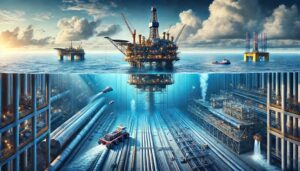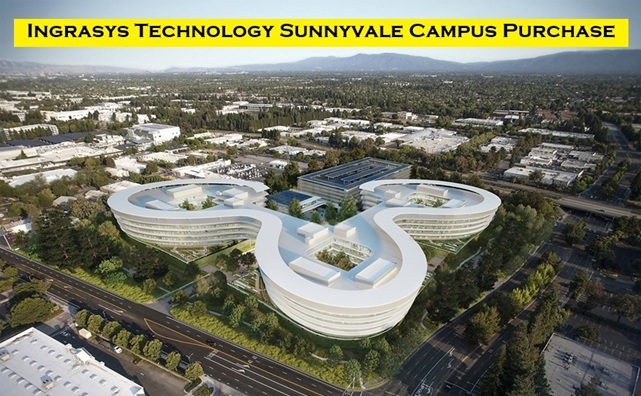Introduction to Deep Offshore Technology
Deep offshore technology refers to the advanced devices, strategies, and systems used to discover, drill, and extract herbal assets like oil and gas from underneath the deep seabed, normally at depths greater than 500 meters (1,640 toes). Over the past few years, the decision for electricity has driven exploration farther into deep and extremely deep waters. This has added approximately the evolution of the current-day era, especially designed to deal with excessive pressures, harsh climate, and far-flung operations.
Offshore drilling in deep waters is taken into consideration one of the maximum hard engineering feats within the electricity sector. It combines marine engineering, robotics, subsea systems, automation, and digital technology to make sure stable, inexperienced, and environmentally compliant operations.
The Origins and Evolution of Deep Offshore Technology
Early Developments
Offshore drilling commenced in the early 20th century in shallow waters. However, the quest for extra assets and technological improvements regularly pushed the enterprise within the path of deeper areas.
In the Seventies and 1980s, groups like Shell and BP started out making a funding in semi-submersible systems and dynamic positioning structures that allowed rigs to carry out in deeper waters. These tendencies marked the starting of deep offshore technology as we comprehend it.
The Rise of Ultra-Deepwater Drilling
By the Nineties and early 2000s, offshore rigs had been drilling in water depths exceeding 1,500 meters. This required sophisticated robotics, superior conversation systems, and remotely operated motors (ROVS) that would withstand the deep ocean’s harsh situations.
Today, deepwater drilling is possible at depths beyond three,000 meters, way to years of studies and multi-billion-greenback investments in technology.
Key Components of Deep Offshore Technology
Floating Production Systems
One of the most critical innovations in the deep offshore era is the Floating Production Storage and Offloading (FPSO) unit. An FASO is a supply-shaped vessel that produces, processes, stores, and offloads oil and fuel, all at the same time as floating in deep waters.
FP SOS are vital in regions where pipelines are not possible or cost-effective.
Subsea Production Systems
Subsea manufacturing structures encompass the whole thing located on the seabed to beneficially utilise oil and fuel production, collectively with:
- Subsea wellheads
- Manifolds
- Control modules
- Umbilicals
These components are designed to operate autonomously under extreme stress and without human intervention.
Remotely Operated Vehicles (ROVS)
ROVS are unmanned robots used for behaviour inspections, upkeep, and restoration obligations underwater. They are controlled from the ground and play a chief role in:
- Surveying seabed situations
- Connecting an underwater machine
- Fixing leaks or mechanical troubles
ROVS can dive deeper than human divers and remain submerged for tons longer periods, making them essential in offshore operations.
Technologies Empowering Deep Offshore Systems

Dynamic Positioning (DP)
In deep waters, anchoring isn’t realistic. That’s where dynamic positioning systems come into play. These structures use GPS, thrusters, and advanced software applications to keep drilling rigs or vessels in a difficult and speedy function over the ocean floor without bodily anchors.
Blowout Preventers (BOP)
A blowout preventer is a protection tool installed on the seabed to control pressure at some stage in drilling. It can seal, control, and monitor wells to prevent of out-of-control launch of crude oil or natural gas.
Following incidents, much like the Deepwater Horizon oil spill, BOPS have emerged as greater advanced and quite regulated.
Digital Twins and AI Integration
In recent years, the offshore industry has commenced the use of digital twins—virtual models of physical assets—and artificial intelligence to:
- Simulate the usual overall performance
- Predict upkeep desires
- Enhance protection and performance
Digital technology is reshaping the destiny of deep offshore operations through the manner of offering real-time tracking and analytics.
Challenges in Deep Offshore Operations
Environmental and Safety Concerns
One of the largest problems is the capacity for oil spills, that could reason big environmental damage. Deep offshore drilling includes excessive-pressure zones that, if now not controlled nicely, can bring about blowouts or leaks.
This is why the company ought to adhere to strict environmental and safety standards.
Technological Complexity
Working at depths of over 1,500 meters approach:
- Extreme pressure
- Low temperatures
- Difficult accessibility
All of this requires distinctly-dependable tool, backup systems, and steady protection. The complexity will increase the cost and threat of operations.
High Investment Cost
Building a deepwater drilling rig or FPSO can price billions of dollars. Add to that the charge of device, personnel training, logistics, and ongoing protection, and the barrier to access turns into very excessive for logo spanking new game enthusiasts.
Future of Deep Offshore Technology
Autonomous Operations
The subsequent phase consists of greater automation. AI-pushed structures, independent underwater vehicles (AUVs), and device studying algorithms are being evolved to make systems smarter and additional consistent.
These technologies will:
- Reduce human mistakes
- Lower operational costs
- Improve protection metrics
Renewable Integration
There’s a growing hobby in combining offshore oil systems with renewable power sources, like offshore wind and wave energy. Hybrid systems want to help reduce the carbon footprint of offshore operations.
Green Drilling Technologies
To meet international climate goals, companies are making an investment in carbon capture and storage (CCS) technology and low-emission drilling fluids. These solutions help make deep offshore operations more sustainable.
Major Deep Offshore Projects Worldwide
Brazil’s Pre-Salt Fields
Brazil is home to a number of the world’s largest deepwater reserves. The pre-salt layer lies below thick layers of salt, making drilling extremely tough. But with superior offshore technology, Brazil has emerged as a leader in deepwater oil production.
Gulf of Mexico
The U.S. Gulf of Mexico remains a hotspot for ultra-deepwater exploration. Projects like BP’s Thunder Horse and Shell’s Perdido show off some of the most advanced offshore structures worldwide.
West Africa
Countries like Nigeria, Angola, and Ghana are leveraging deep offshore technology to unlock strong reserves and grow their economies.
Advantages of Deep Offshore Technology
- Access to untapped assets: Deepwater reserves are some of maximum huge in the international.
- Boosts power independence: Countries can lessen reliance on foreign places of oil.
- Job introduction: High-tech offshore duties generate hundreds of expert jobs.
- Advancement in technological know-how: Deep offshore research improves marine biology and earth science information.
Disadvantages and Ethical Considerations
- High environmental risks: Accidents ought to have long-lasting ecological outcomes.
- Expensive ventures: Only a few big agencies can discover the money for the prices.
- Climate issues: Offshore oil continues to contribute to fossil fuel dependency.
Conclusion
Deep offshore generation represents the cutting edge of engineering and innovation in the power zone. It permits the exploration of resources as quickly as ideas are unreachable, in a way to a complicated internet of robotics, software, and marine infrastructure. However, this improvement moreover comes with worrying situations—from environmental troubles to excessive costs and operational risks.








